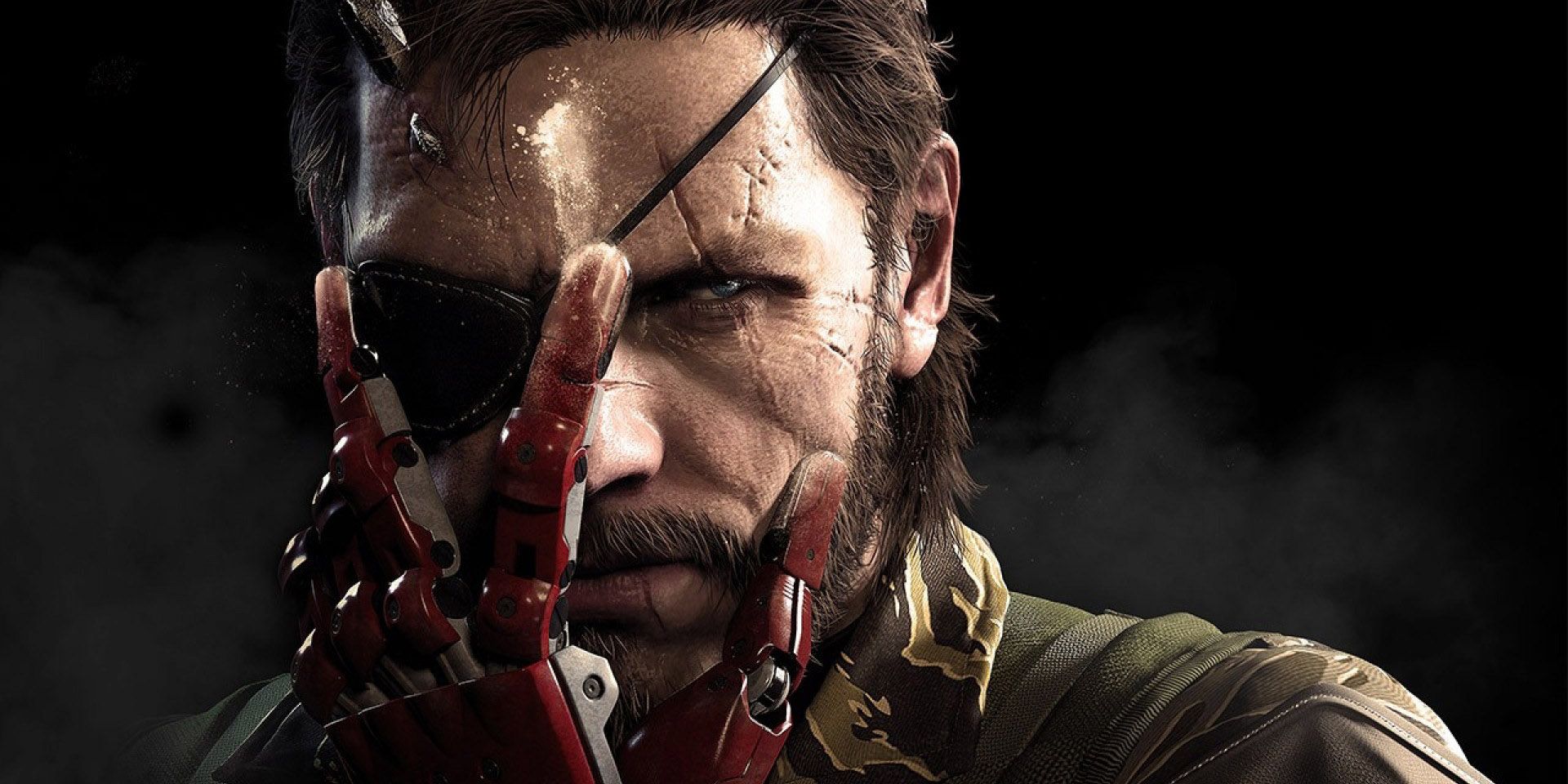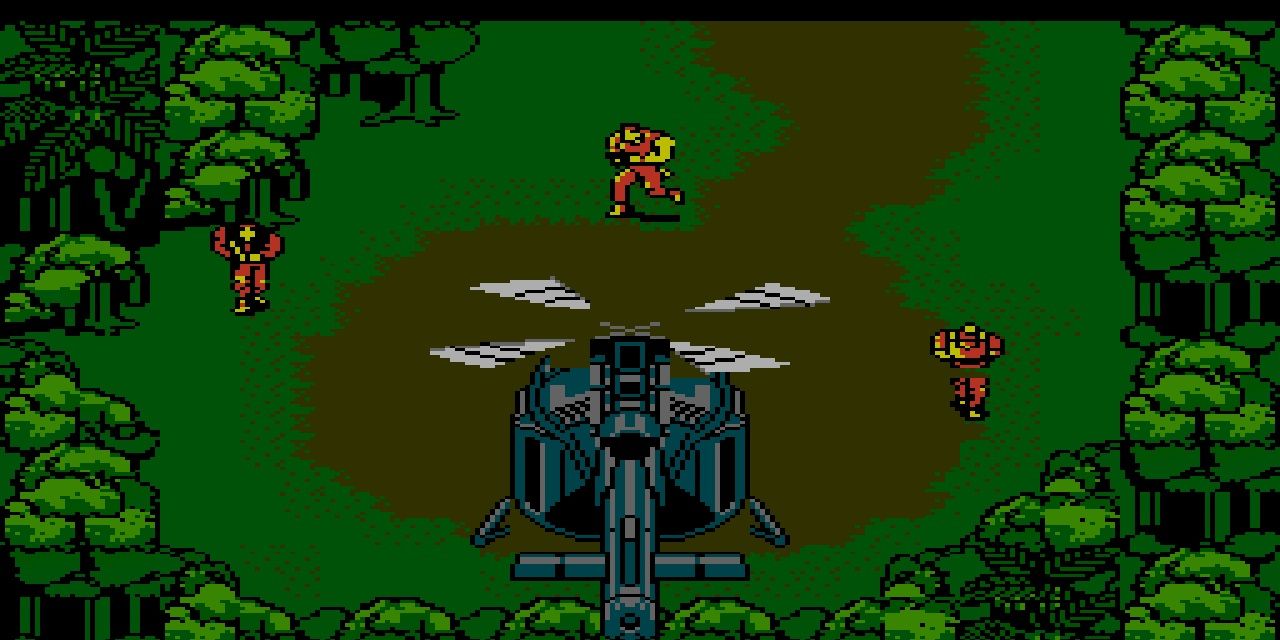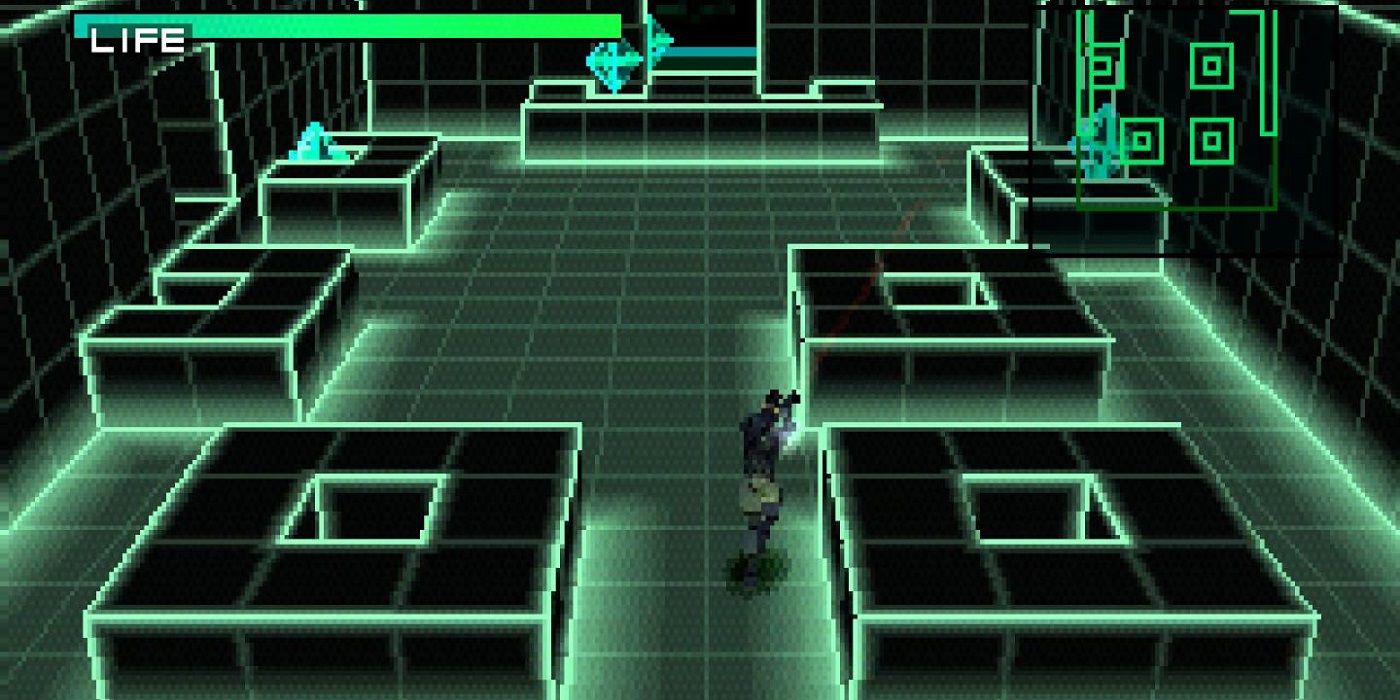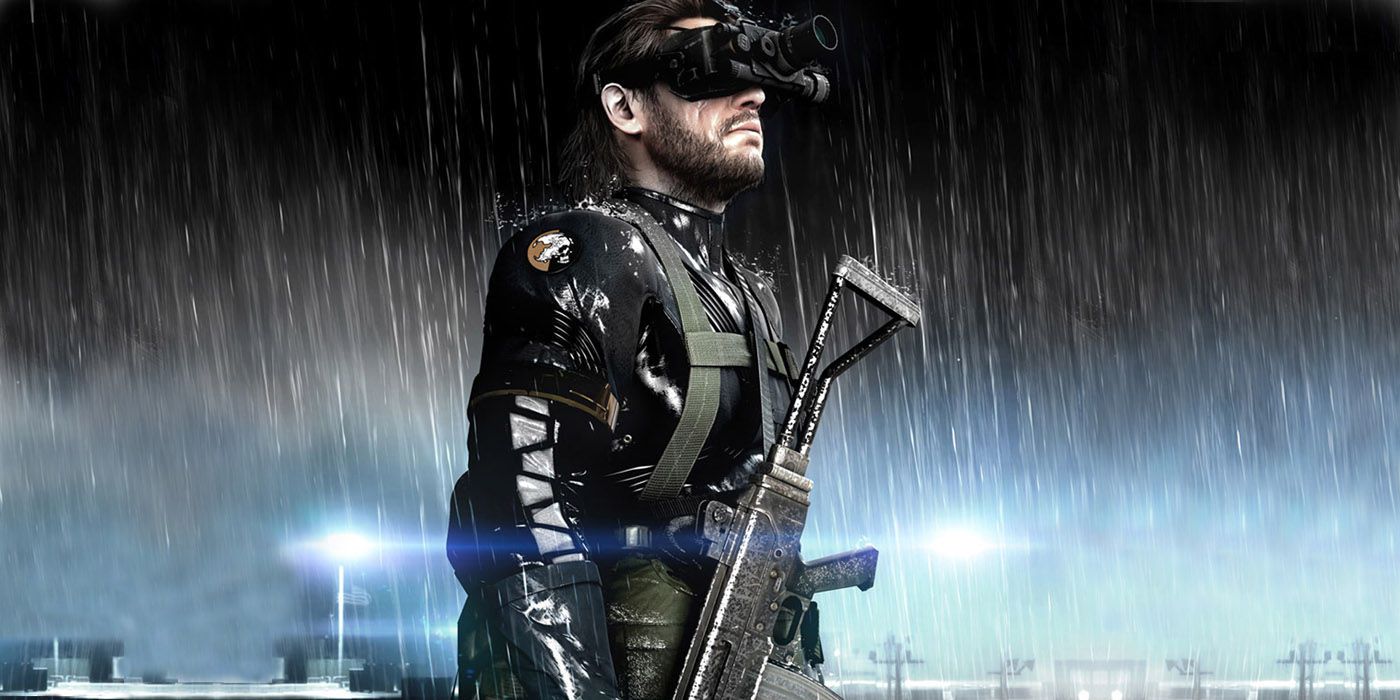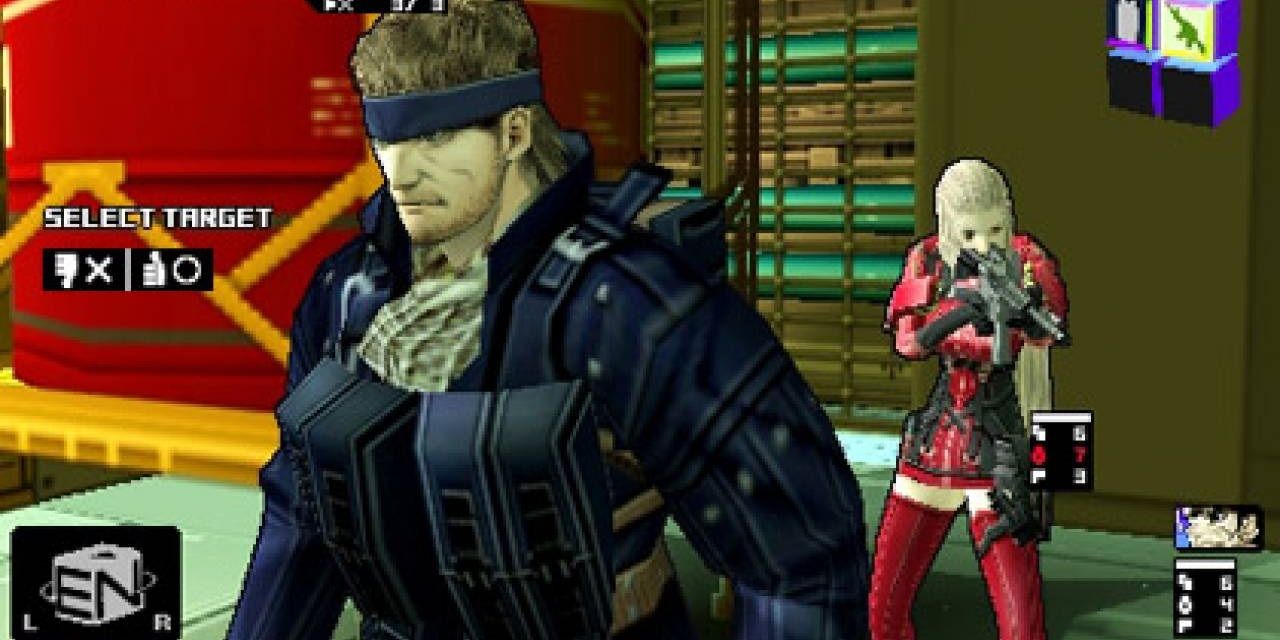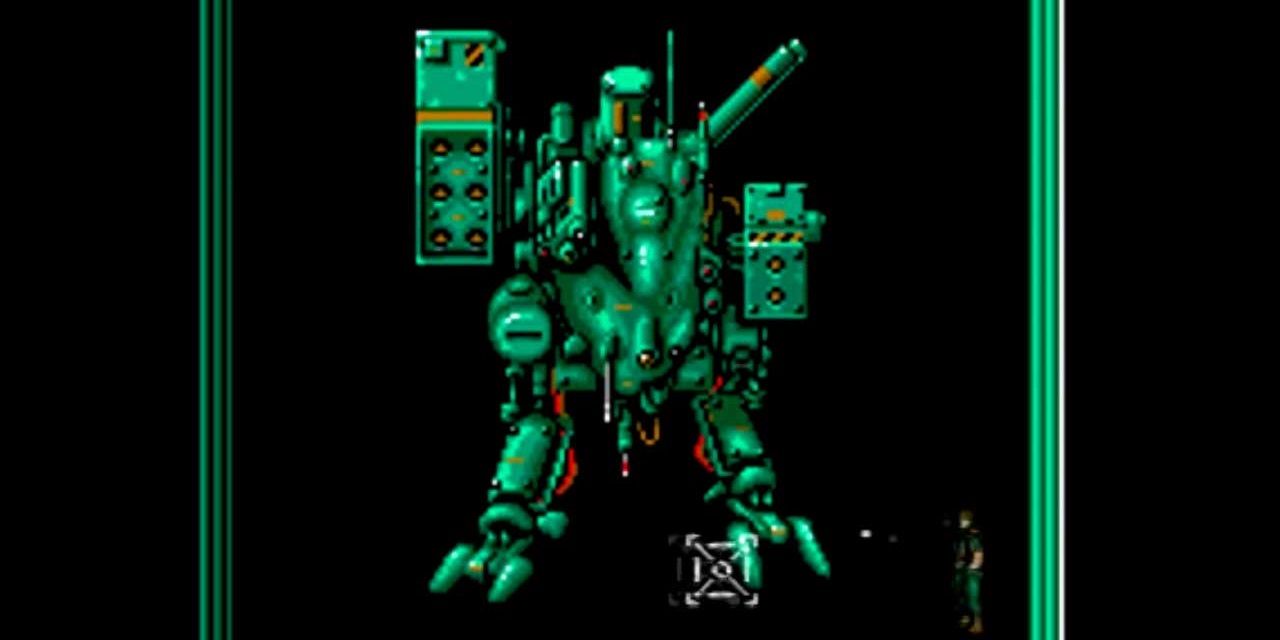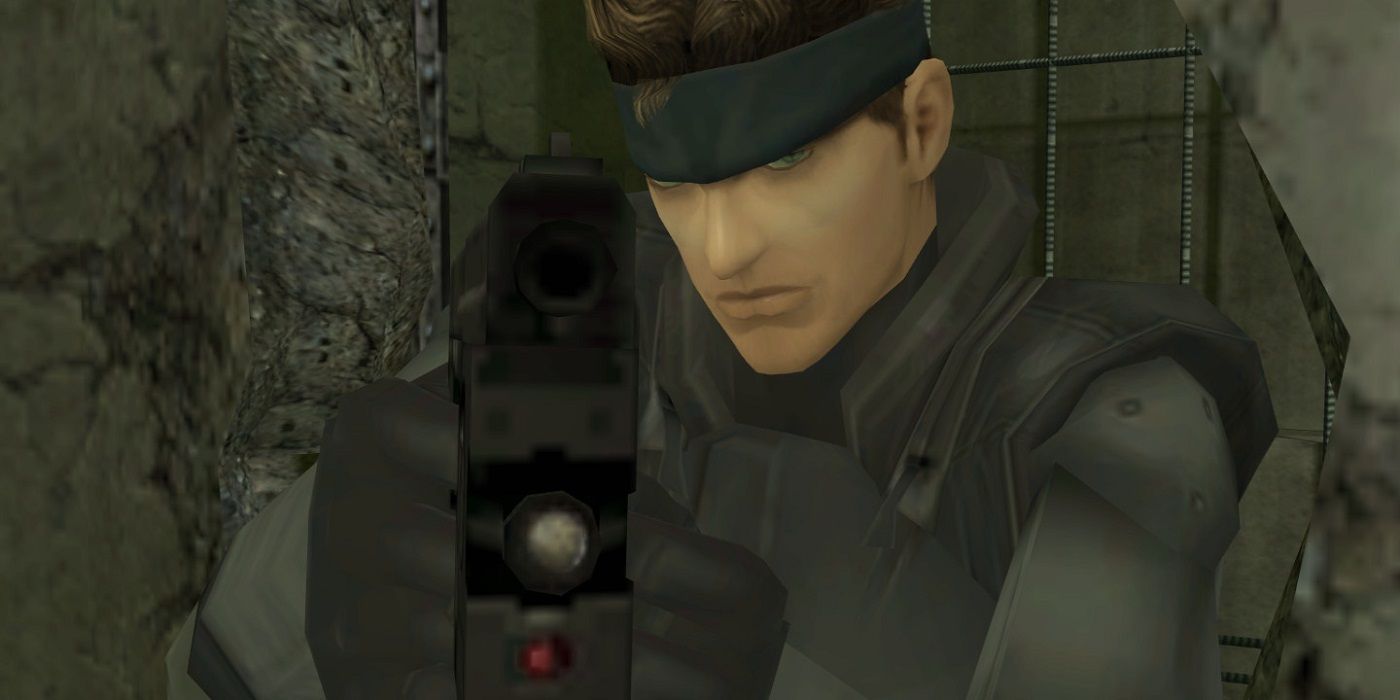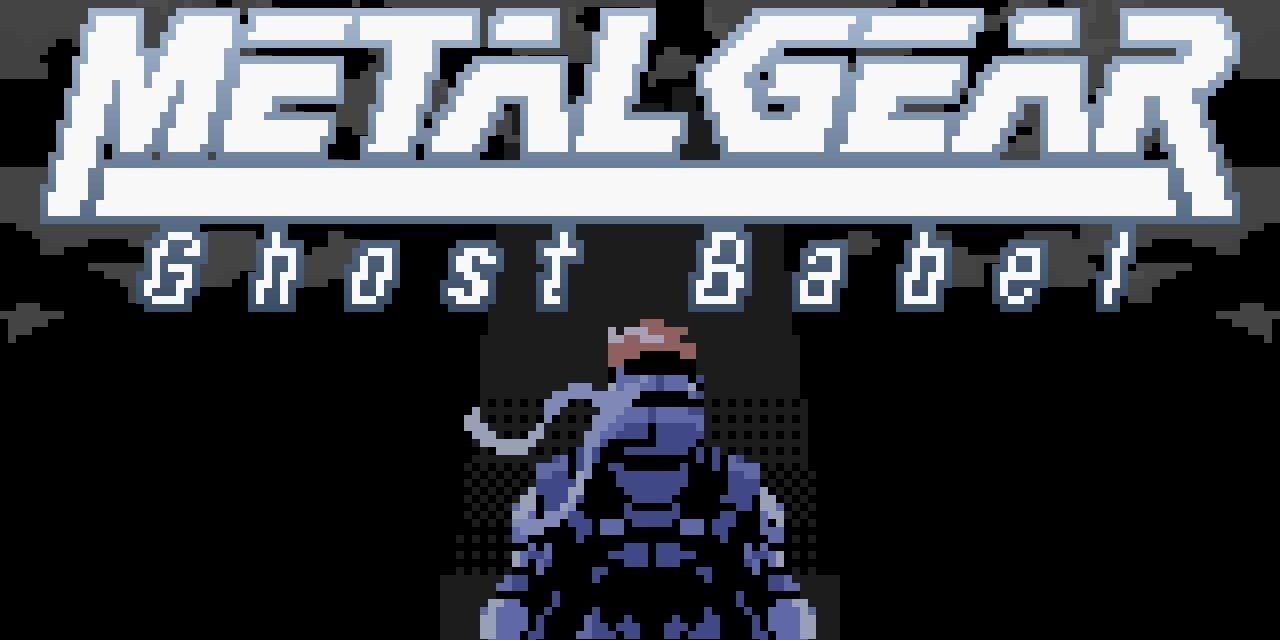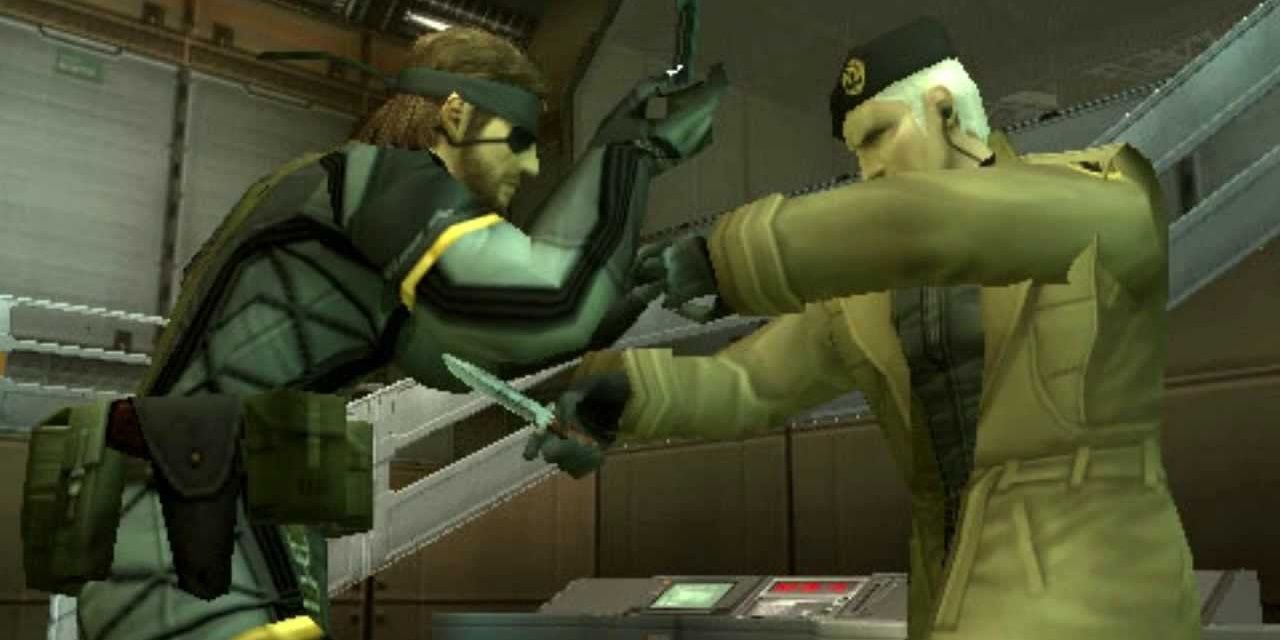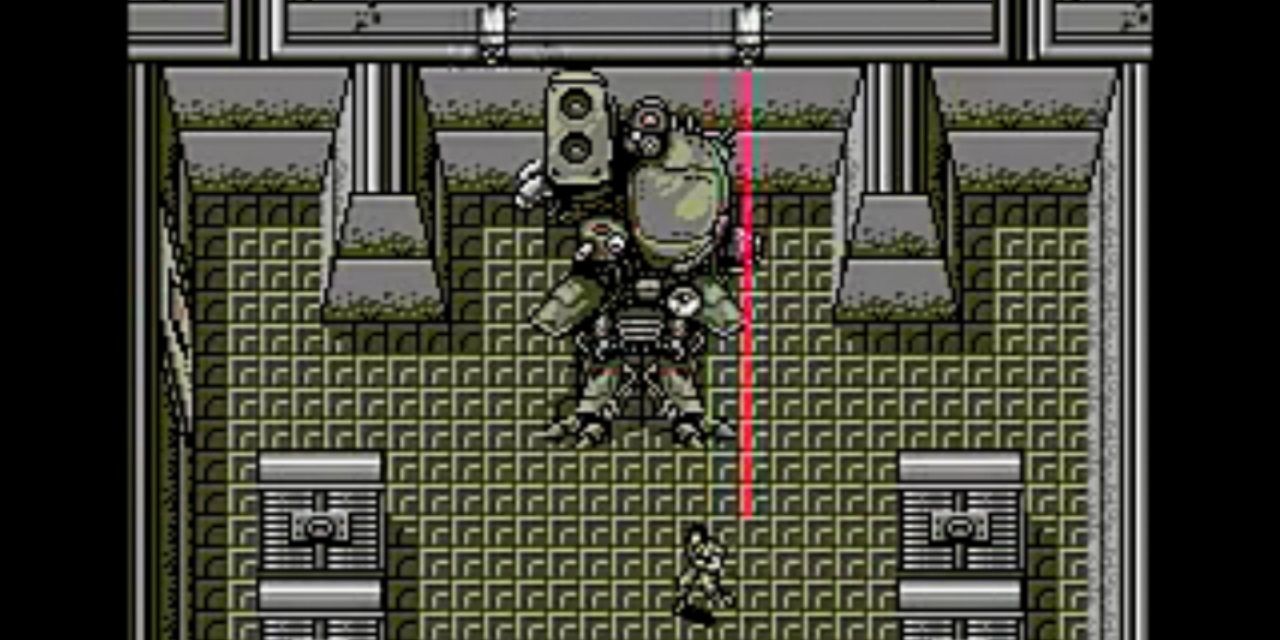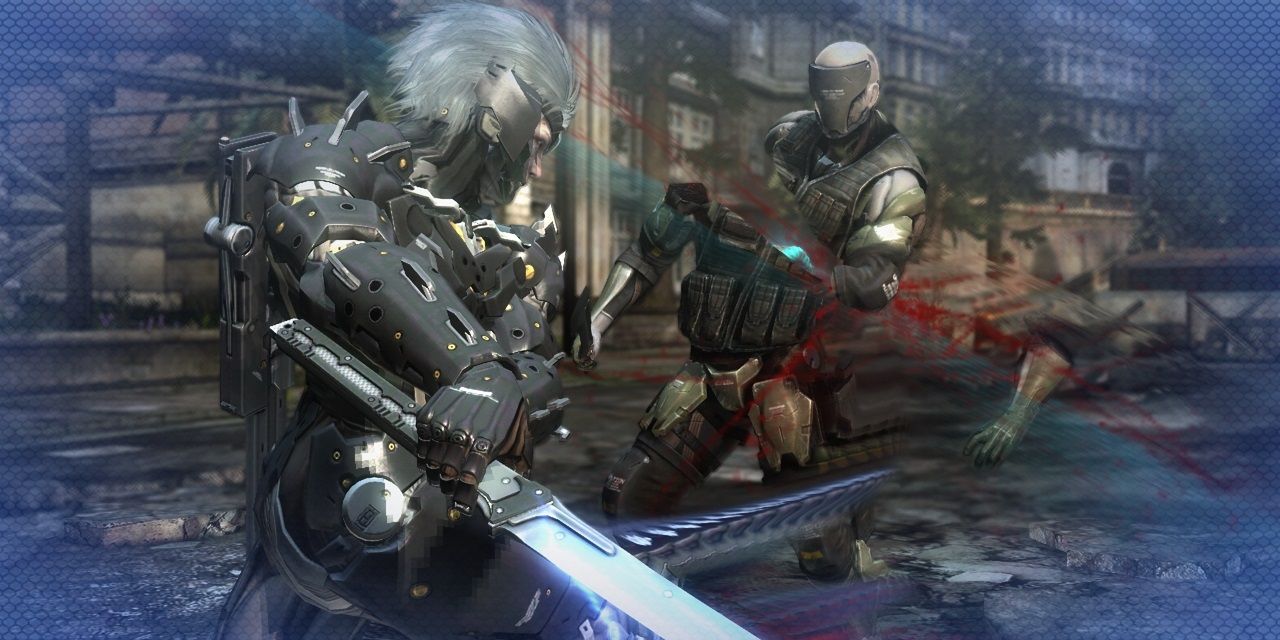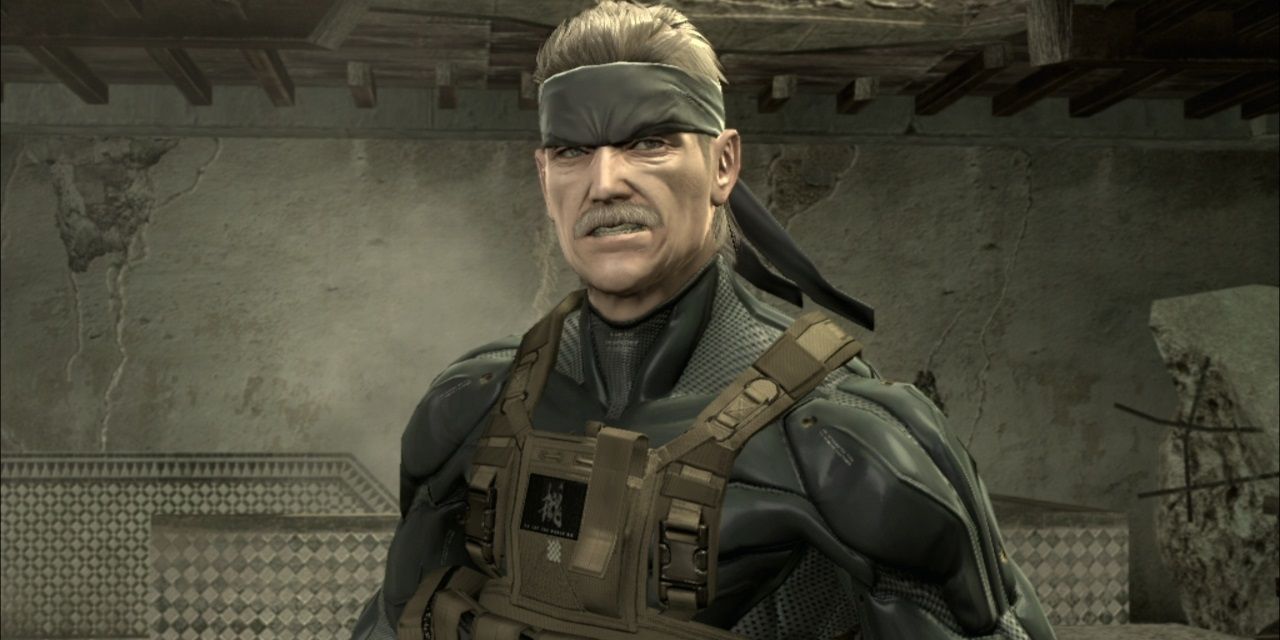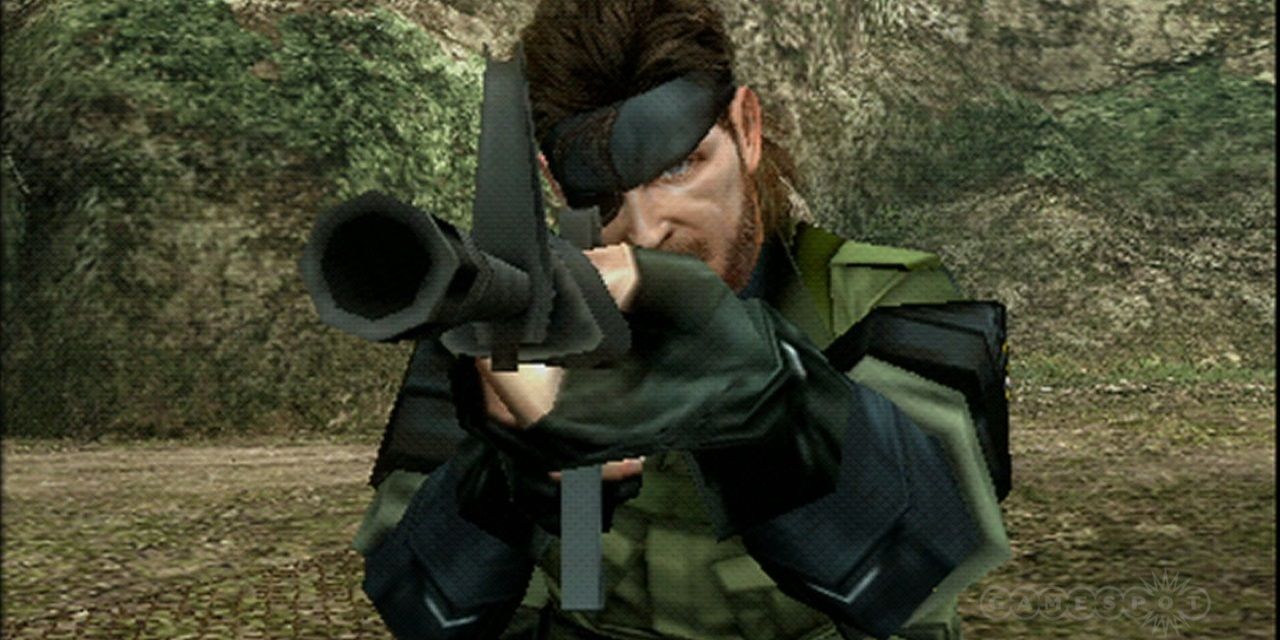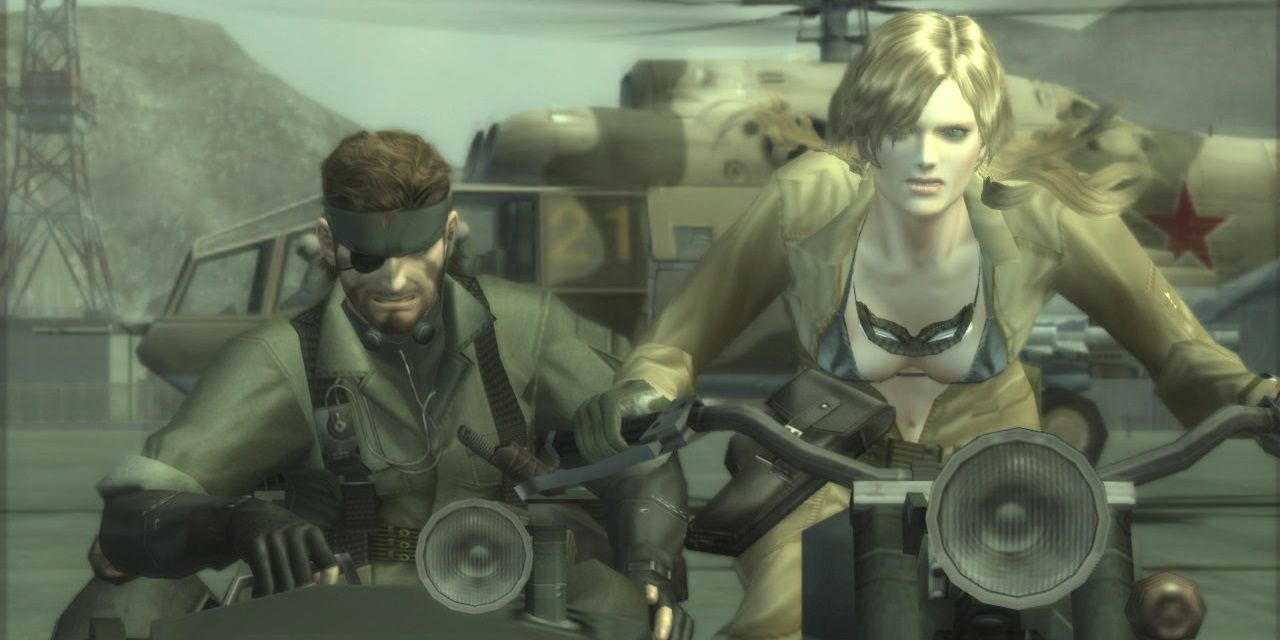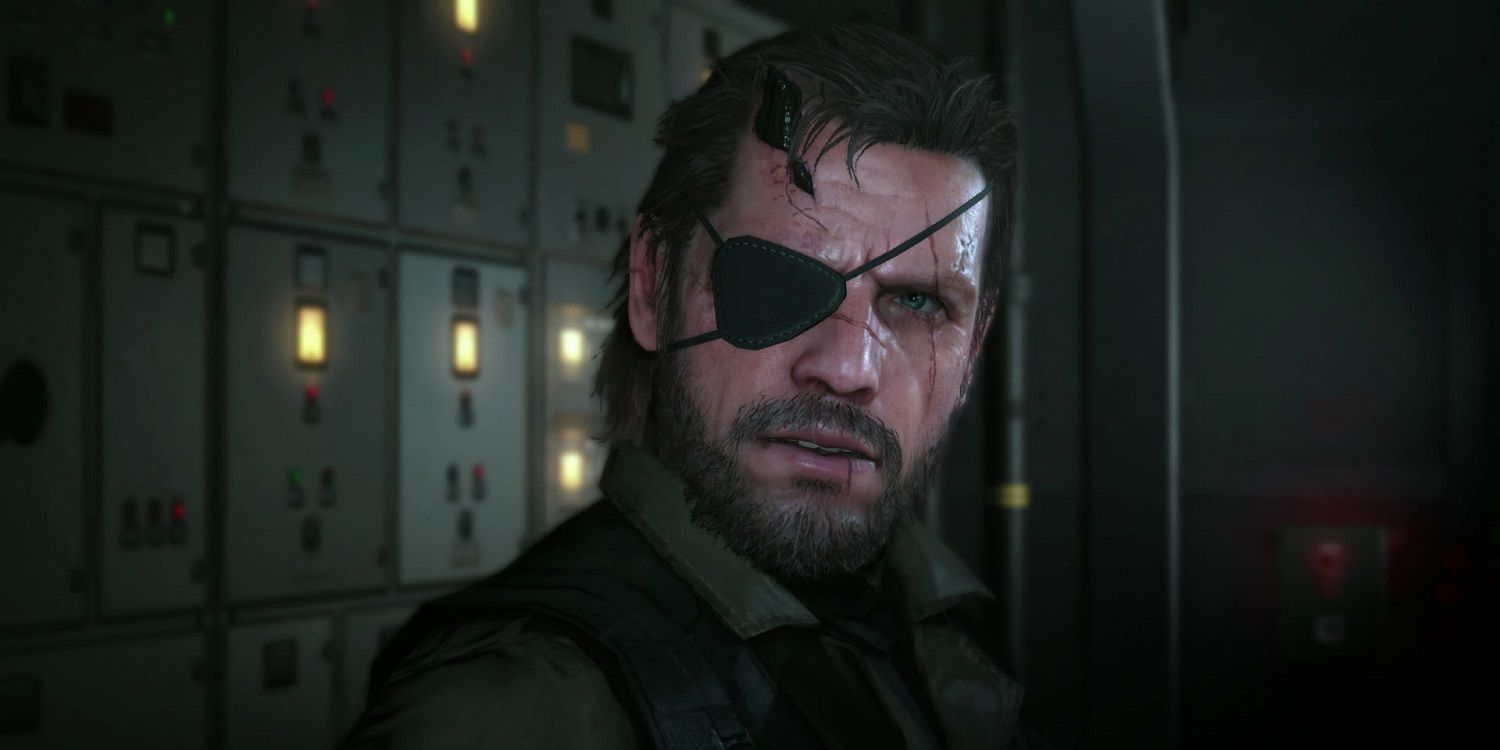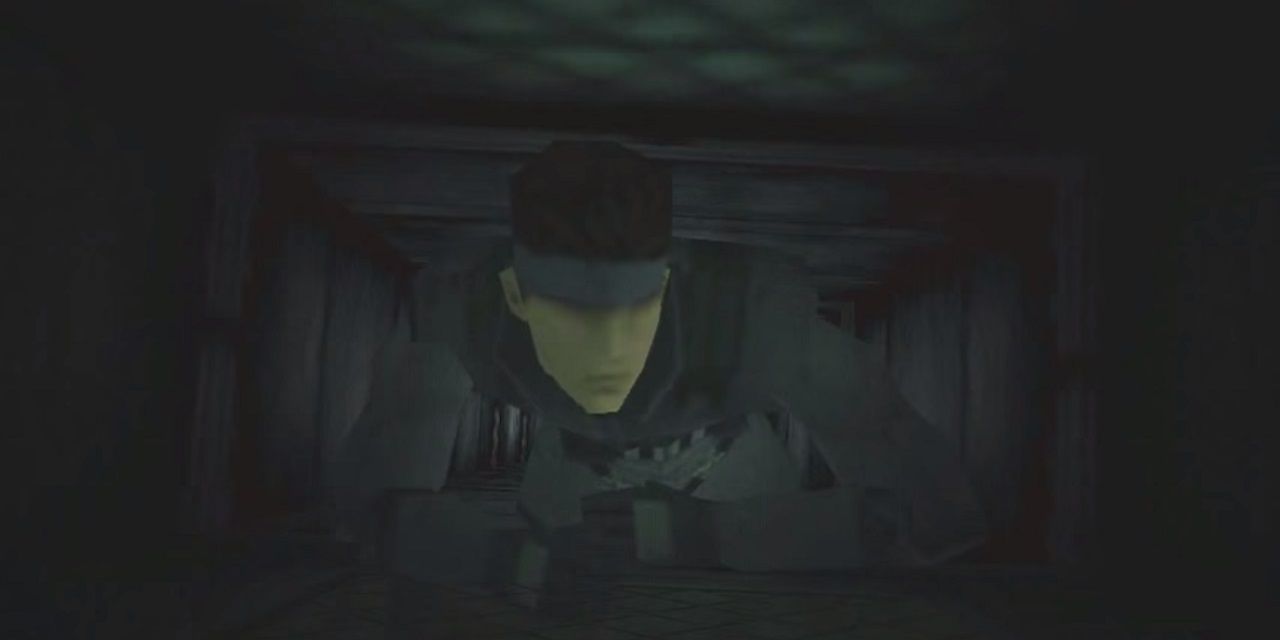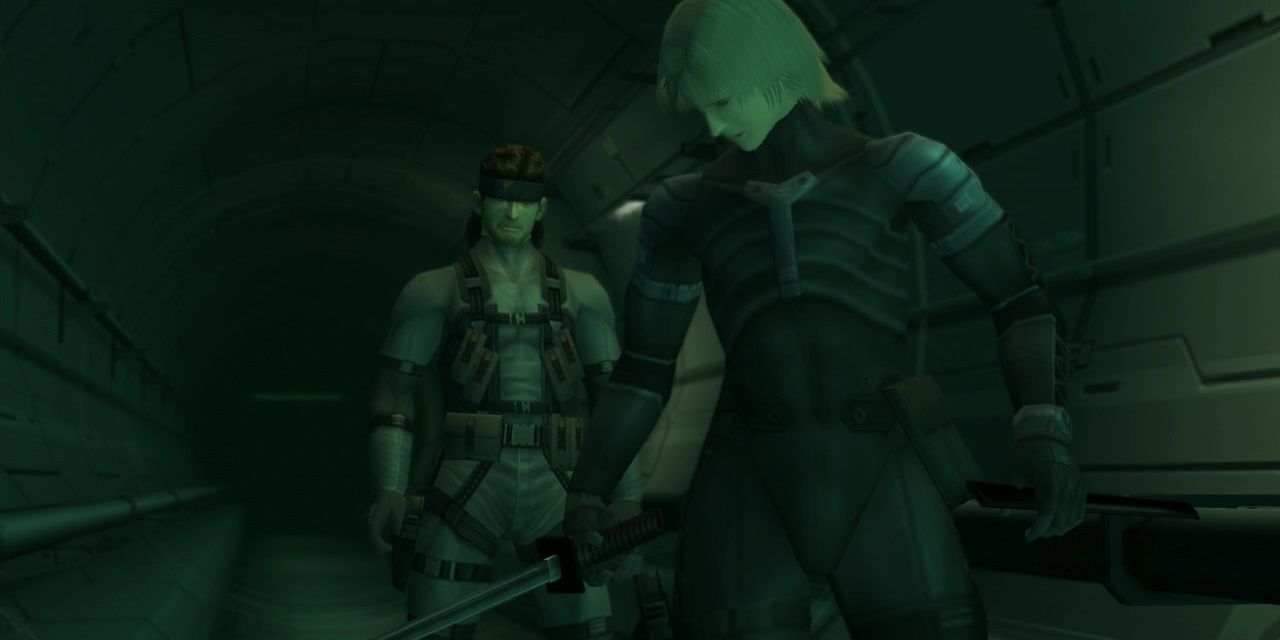Metal Gear is one of the most revered sagas in the history of video games. Since 1987, the story of Solid Snake and his complicated family tree has been one of gaming's most popular soap operas. Series creator Hideo Kojima was there all the way in the beginning, and ushered the series through generations and decades of evolution for the Metal Gear saga, culminating in 2015's Metal Gear Solid V: The Phantom Pain.
However, despite Metal Gear's continued success, things behind-the-scenes were not as amicable as they seemed. Developer Kojima Productions and publisher Konami had a bitter falling out early in 2015, culminating in the dissolution of Kojima Productions and the outright firing of series mastermind Hideo Kojima, along with the cancellation of all of his projects, including the eagerly-anticipated Silent Hills.
With the announcement of Metal Gear Survive, the first new MG title since Kojima's unceremonious firing, we've decided to take a look back at Every Metal Gear Game, Ranked Worst To Best. We're including non-canon spin-offs like Ghost Babel and Snake's Revenge, but not updated re-releases like Substance and Subsistence.
16. Snake's Revenge
"This is Big Boss. You destroyed Metal Gear 1 and made me a cyborg. Now I want revenge."
There are only a few things Metal Gear-related that are unanimously rejected by the fandom, but 1990's Snake's Revenge is one of them. After the western NES port of the original Metal Gear became a surprise smash hit, Konami called for the development of an immediate sequel, targeted towards the western market. Snake's Revenge features characters from the original game, like Jennifer and Big Boss. Snake himself is given the rank of Lieutenant, and is portrayed using a knife, a weapon the canon version of the character wouldn't use until Metal Gear Solid 4 in 2008 (although Big Boss would use one in MGS3).
Despite being the undisputed black sheep of the Metal Gear family, Snake's Revenge does have a pivotal role in the behind-the-scenes history of the series. Legend has it that Hideo Kojima had a chance meeting with one of the developers of Snake's Revenge, who recommended that he create a true successor to his 1987 classic, which ultimately led to the development of Metal Gear 2: Solid Snake.
15. Metal Gear Solid: VR Missions
"War as a video game; what better way to raise the ultimate soldier?"
In Japan, 1998's Metal Gear Solid was eventually re-released as Metal Gear Solid Integral, which featured numerous enhancements to the main game, as well as a second disk packed with hundreds of "VR Missions," gameplay challenges set in a virtual reality environment. American audiences never got the enhanced version of Metal Gear Solid -- with Very Easy mode, first person movement, and a Sneaking Suit for Meryl, among other changes -- but we did get the VR Missions, sold as a stand-alone title.
Unfortunately, VR Missions is more of a cool bonus than a worthy Metal Gear Solid game. There's no story or narrative to speak of, and the missions are often boring, mind-numbingly obtuse, or obscenely difficult. It's a hodgepodge of ideas that appeals mainly to fans who prefer the MGS's gameplay to its story... Which is very few people, especially back then. Still, at least having some hands-on experience with VR Missions gives some extra context to the scenes in Metal Gear Solid 2 which discuss Raiden's own extensive VR Training, a metaphor for the gamer having played through previous titles.
14. Metal Gear Solid V: Ground Zeroes
"You might be able to erase the markings, but the memories will never disappear."
Back when Metal Gear Solid V was first announced, it was only known as Ground Zeroes. Meanwhile, the so-called Moby Dick Studios was working on a different game, The Phantom Pain, which was not revealed as a Metal Gear title until much later. Eventually, Ground Zeroes was established as being a prologue to the main experience, a budget-priced teaser meant to show off the FOX Engine and build hype for the main game, Metal Gear Solid V: The Phantom Pain.
When Ground Zeroes came out in 2014, it stunned gamers with its amazing graphics and authentic stealth/action mechanics, though its main mission was criticized for its short length and lack of narrative threads, despite having one hell of a cliffhanger ending. While it does contain extra content -- bonus, non-canon missions billed as "historical reenactments," which serve to flesh out and contextualize parts of the story -- the fact that they all are set on the same map betrays Ground Zeroes's status as a glorified demo.
13. Metal Gear Ac!d & Ac!d 2
"Don't worry about Snake. He's been to hell and back. He's a survivor."
When Sony released their first handheld game system, the Playstation Portable, Konami made sure they had a brand new Metal Gear game to bolster the device's launch. Metal Gear Ac!d is a departure for the series, using card-based movement and combat. That stuff was all the rage back in 2005. A non-canon spinoff to the main series, the Ac!d games embrace a more over-the-top anime-esque narrative than the mainline titles, with cartoonish villains who make the likes of Fatman and Vulcan Raven look downright subtle by comparison. Ac!d 2 even adopts a delightfully eye-catching cel shaded art style.
Ac!d 2 came with a 3D mode, which could be viewed using a dinky-but-effective cardboard peripheral, called the Solid Eye, the name of which would later be appropriated for Solid Snake's eyepatch in MGS4. Not only could the main game be played in 3D mode, but certain cut scenes from MGS3 and even the first epic trailer for the then-unreleased MGS4 could be viewed in 3D. Not bad for a handheld spinoff!
12. Metal Gear 2: Solid Snake
"The only thing that satisfies your cravings is war. All I've done is given you a place for it. I've given you a reason to live."
After being persuaded to develop a true sequel to Metal Gear after learning of the Snake's Revenge game, Hideo Kojima came up with Metal Gear 2: Solid Snake, which would continue the story of series protagonist Solid Snake and bring him into conflict with Big Boss yet again, while also bringing back Snake's old friend, Grey Fox -- this time as an enemy.
Metal Gear 2 is a much bigger game than the original, with a lot more dialogue (relayed entirely via text; it was only 1990, after all) and more varied gameplay scenarios. However, the title was still only developed for the MSX home computer, which meant that the game was a bit too ambitious for the hardware it was developed for. Compared to the more primitive and less complex Metal Gear, MG2 feels a bit more dated, which is driven home by the fact that the next sequel, 1998's Metal Gear Solid, reuses a great many concepts from MG2. Metal Gear Solid features sequences ripped right out of MG2, such as chasing a woman (disguised as an enemy soldier) into the bathroom, a gunfight in a cramped elevator, an action-packed ascension up a seemingly endless staircase, and that whole shape memory alloy business. Finally, before Raiden and Grey Fox's resurrection, Kyle Schneider appeared as Black Ninja, the first of many such ninja to appear in the series.
11. Metal Gear Solid: The Twin Snakes
"How nostalgic."
After the release of the groundbreaking MGS2 in 2001, Konami recruited developer Silicon Knights (Eternal Darkness, Too Human) to create a remake of Metal Gear Solid, but using the graphics and gameplay of MGS2. The end result, The Twin Snakes, is a noble effort, but suffers from some awkward dissonance in its story and level design.
It's great to see the classic environments from the original game updated to 2004's standards, but as a result of the lack of creative license and nigh-identical level design, moves like Hanging Mode become practically useless, and the first-person-shooting mechanics can completely ruin several boss fights, including the one with Revolver Ocelot, which becomes hilariously easy and exploitable.
The story and dialogue remain almost entirely intact from the original, which is excellent, but many scenes are extended with superfluous action sequences which showcase Solid Snake employing ridiculous acrobatics, and are way out of character for the relatively grounded protagonist. The Cyborg Ninja similarly had some new action beats, but he was always an enhanced supersoldier, so his additions were met with far more approval from the fandom.
While The Twin Snakes is still a great game, Metal Gear fans see it more as a curious nugget than a legitimate replacement for the 1998 classic.
10. Metal Gear: Ghost Babel
"You believe in coincidence? I believe in conspiracy."
Metal Gear: Ghost Babel started life as a port of MGS to the Game Boy Color, but quickly became its own entity. This non-canon spinoff acts as an alternative sequel to Metal Gear 2: Solid Snake, and brings Snake back to the South African fortress nation, Outer Heaven, now rechristened Galuade, to do battle with a new Metal Gear. The story is surprisingly deep and well-realized for a GBC game, with the heady themes the series is known for and noticeably improved gameplay over Metal Gear 2. Ghost Babel brings in a lot of features from MGS which were missing from MG2, such as knocking on walls, more versatile 8-way movement, and a moving camera, rather than the individual "screens" of the MSX titles.
Metal Gear: Ghost Babel was released in the United States as Metal Gear Solid, which surely confused some players, but quickly turned out to be a pleasant surprise, rather than the compromised port of a much better game they may have been expecting.
9. Metal Gear Solid: Portable Ops
"Look at what you've lost already! What kind of country deserves this much loyalty, Snake?!"
We admit to having a soft spot for this often-overlooked PSP title. Set in 1970, six years after Snake Eater, Portable Ops, despite its silly title, feels just as much a true Metal Gear title as its predecessor, with authentic stealth action gameplay, a gripping story which continues the themes of MGS3 and ties in to MGS4, and its own unique set of characters. Gene, Cunningham, Elsa & Ursula, and the mysterious Null (revealed to actually be a certain Metal Gear regular) all would feel right at home in any of the main console games.
Some of the mechanics were slow, like dragging soldiers to trucks and the fact that it took some major thumb gymnastics to play this game on the PSP, which lacked a second analog stick, but used a freely-rotatable camera, rather than the fixed angles of MGS3's initial release. Still, Portable Ops proved that the PSP was more than capable when it came to delivering a fully-fledged Metal Gear experience. Sadly, unlike its successor, Peace Walker, Portable Ops has yet to receive a release on a home console.
8. Metal Gear
"I feel asleep!"
Back in 1987, the stealth action genre was officially born with the release of the original Metal Gear on the MSX. Western gamers got a somewhat compromised version of the game on NES, which suffered from numerous changes and a severely butchered translation job (see the above quote, which should have read, "I fell asleep!"). At the end of the NES version, bizarrely, the player didn't even get to do battle with Metal Gear itself, but rather a large computer.
Despite being a decidedly lesser game than its Japanese progenitor, Metal Gear became a surprise hit in the West, leading to development on Snake's Revenge and, ultimately, Metal Gear 2: Solid Snake. The twist at the end of this game -- that Big Boss, FOXHOUND commander, was also the leader of the mercenary fortress nation, Outer Heaven -- was pretty shocking for the time, and has had repercussions for the series all the way through to last year's Metal Gear Solid V: The Phantom Pain, in which it was explored in far greater detail.
7. Metal Gear Rising: Revengeance
"I told myself this was about justice, about protecting the weak, but I was wrong... It's time for Jack to let 'er rip!"
The upcoming Metal Gear Survive isn't the first title in the series to be controversial for not including series mastermind Hideo Kojima, though it is undoubtedly the most egregious. Going all the way back to 2001's MGS2, Kojima had always wanted to retire from the series and pass on development duties to the next generation of Konami, but for one reason or another, he kept coming back to write and direct.
After finishing work on Metal Gear Solid 4, the grand finale for the story of Solid Snake, Kojima Productions split up to work on the prequel, Peace Walker, as well as a spin-off entitled Metal Gear Solid: Rising, which would have chronicled Raiden's life in between MGS2 and his cyborg appearance in MGS4. Unfortunately, due to various favors, the Rising team was floundering without Kojima's leadership, and the game was quietly cancelled.
However, at the Spike Video Game Awards in 2011, the game was re-revealed as Metal Gear Rising: Revengeance. Rather than an interquel, this reinvigorated version of the game was still written by the lovely folks at Kojima Productions, but it was developed by legendary action studio Platinum Games, who had developed awesome titles like Bayonetta and Vanquish. Upon its release in 2013, Revengeance turned out to be a fitting continuation of the themes from MGS2 and MGS4, while also carving (or slicing) its own niche into the action field with unprecedented cutting mechanics and a righteously unhinged take on protagonist Raiden. Now if we can just get a sequel...
6. Metal Gear Solid 4: Guns of the Patriots
"It's not about changing the world. It's about doing our best to leave the world the way it is. It's about respecting the will of others, and believing in your own."
In 2008, the story of Solid Snake came to a close in the stunning Metal Gear Solid 4: Guns of the Patriots. After years of holding and releasing the square button to shoot (isn't that so weird?!), MGS4 finally updated the gunplay mechanics to modern standards, and also told a story larger and more ambitious than any previous MGS game. It's a tribute to video games as a medium that an esoteric drama which appealed directly and practically exclusively to long-term MGS fans, with literally more cutscenes than gameplay, can be given a budget exceeding $100 million dollars and the full marketing weight of Sony Computer Entertainment. MGS4 was a great success and is one of several games credited with bringing the PS3 back from the abyss of its disastrous launch.
MGS4 has more than its fair share of detractors due to the fact that the game is overstuffed with endless cutscenes and a sheer overload of Kojima's signature overwrought melodrama, but to many die-hard fans, this is the perfect ending to one of the most historic sagas in video game history.
5. Metal Gear Solid: Peace Walker
"Revolution or no revolution, you pick up a gun, and sooner or later you're going to hell."
MGS4 is, indeed, the grand finale for Solid Snake, but there were still more Metal Gear stories yet to be told, and one such story is Metal Gear Solid: Peace Walker. Released for the PSP in 2010, Peace Walker continues the story of Big Boss in 1974, all but ignoring the events of Portable Ops and setting in motion the events that would lead to Ground Zeroes and The Phantom Pain.
Peace Walker was influenced by Capcom's Monster Hunter series and featured titanic bosses, RPG-mechanics like upgrading weapons, and four-player co-op multiplayer (two player in some missions). Another great feature in Peace Walker was a complete overhaul of the radio system. Metal Gear's classic character-building sequences could be accessed from a menu before missions, ensuring that none would be accidentally skipped, and they could be replayed at the player's leisure.
Many of Peace Walker's innovative features, like the Fulton Recovery System, cassette tape recordings, varied mission structure, and upgradeable Mother Base would all be carried over to 2015's Metal Gear Solid V.
4. Metal Gear Solid 3: Snake Eater
"Light is but a farewell gift from the darkness to those on their way to die."
After Metal Gear Solid 2 ended with one heck of a cliffhanger, Hideo Kojima took that game's criticisms to heart and used the feedback to play yet another trick on the fandom. Players didn't like whiny Raiden and wanted to have Snake back? They got it. Not Solid Snake, but the original, the man who would become known as Big Boss: Naked Snake. Fans didn't like the ambiguity of MGS2's narrative? They wanted for MGS to be they way it used to be, before things got unruly and complicated? MGS3 was set in 1964, at the height of the Cold War, showing that things were never as simple as our penchant for nostalgia would have us believe.
MGS3 ditched the radar and most other 21st-century tech from previous games and introduced brand new survival elements to the series. Snake now had to catch and eat food to survive, and could even blow up munitions shacks and food storage to weaken the enemies in the area. A little more than a year after its initial 2004 release, Snake Eater was re-released as MGS3: Subsistence, which bundled in enhanced versions of the original Metal Gear and its first sequel (in fact, it was the first time Metal Gear 2 had been released in America), but also overhauled the camera system, including, at long last, a freely movable modern system in addition to the classic fixed angles.
3. Metal Gear Solid V: The Phantom Pain
"I won't scatter your sorrow to the heartless sea... I won't see you end as ashes. You are all diamonds."
One way or another, for better or worse, Metal Gear Solid V is the final chapter in the series as we know it. The title comes from the real-world phenomenon of "Phantom Pains", when missing limbs feel like they're hurting. It's feeling the suffering of that which is not present. MGSV is notorious for its severely truncated Chapter 2, and completely excised Chapter 3, and it hurts that we don't have the complete game. We don't know exactly what's missing, and can only speculate where the story would have gone after the shocking revelations in "The Truth." What we do know is that MGSV, as it stands, in its flawed and unfinished form, is still one of the greatest video games ever made. It's like when someone creates their masterpiece and then it is snatched away from them before being ripped to shreds and returned. It's still a masterpiece, it's just not everything it could have, or should have, been.
The open-world setting is perfect fit for Metal Gear's refined stealth mechanics, and Kiefer Sutherland is great in the role of Venom Snake, aka Big Boss, though it's distressing how infrequently the character speaks. The story progression is very non-linear, with the game unfolding at the player's pace, with classic Metal Gear cutscenes being rare as diamonds, a treat for the dedicated. The plot twists are as bold and revelatory as they are shocking, with the characters being written more deeply and intimately than ever before.
Of course, there's that one twist. You know the one. What's so interesting about that twist is that it's not really a twist. It's all but totally laid bare in the game's opening scenes, and subsequent interactions practically hammer the point home. By the end when it's fully revealed, only the most clueless of players would be taken by surprise, just as Kojima intended.
2. Metal Gear Solid
"There are no heroes in war. The only heroes I know are either dead or in prison... I'm just a man who's good at what he does: killing."
1998's Metal Gear Solid was the one that blew the doors wide open, a true game-changer. MGS was so popular that many players, even to this day, don't realize that it's actually the third entry in the series. The legend goes that Metal Gear Solid was so named because it had 3D graphics which looked like "solid" objects, as opposed to the flat sprites of the past. Also, Konami surely didn't want to count on new fans not being interested in a sequel to a game they had never heard of.
Metal Gear Solid basically took the gameplay and setpieces from Metal Gear 2 (minus the silly bits like the Zanzibar Land Hamsters) and redid them in 3D using the power of the Playstation to make a sequel to the game it essentially remade. It's more than a little bizarre in hindsight, but it doesn't stop MGS from being a timeless classic. MGS set new standards in the realm of video game storytelling, with a complex plot full of conspiracies and varied characters, all of whom were fully voiced. Metal Gear Solid blurred the lines between games, movies, and radio dramas, creating a formula that has withstood the test of time with poise and grace, and is well worth playing today, ancient graphics notwithstanding.
1. Metal Gear Solid 2: Sons of Liberty
"Find something to believe in, and find it for yourself. When you do, pass it on to the future."
Metal Gear Solid 2 took the formula of the original game and its unexpected following, updated the presentation to fit with the then-new Playstation 2, and told a story that was as off-the-walls insane as it was socially relevant and thought-provoking.
An artist must walk a fine line, giving the audience what they want and expect, while also innovating and creating new experiences with their own artistic merit. Metal Gear Solid 2 featured a refined version of the first game's stealth action, but opened things up with its immersive first-person targeting mechanics, which merged well with the game's central narrative theme of identity, of the relationship between the player and their in-game avatar, and whether or not the character can exist without a gamer at the controls.
Raiden starts the game as an unknown entity, a rookie operative on his first real mission, and his character is overtly a stand-in for the player. However, as the game goes on, revelations about Raiden's past and his desire to keep them hidden from his girlfriend Rosemary lead to him ultimately distancing himself and outright severing his ties with the player. At the end, Snake notices the dog tags on Raiden's neck, emblazoned with the name and birthday of the player. "Anyone you know?" Snake asks. "Never heard the name before in my life," Raiden replies, throwing them away, ready to begin a new chapter in his life... Until he becomes a terrifically awesome cyborg ninja in MGS4.
---
It's been nearly three decades since Solid Snake first infiltrated Outer Heaven in the original Metal Gear, and we have no clue what the future holds for this legendary series, but whatever happens will never change the legacy of Metal Gear and how it changed the video game landscape forever.
Do you agree with our list? What's your favorite Metal Gear title? Sound off in the comments below!

